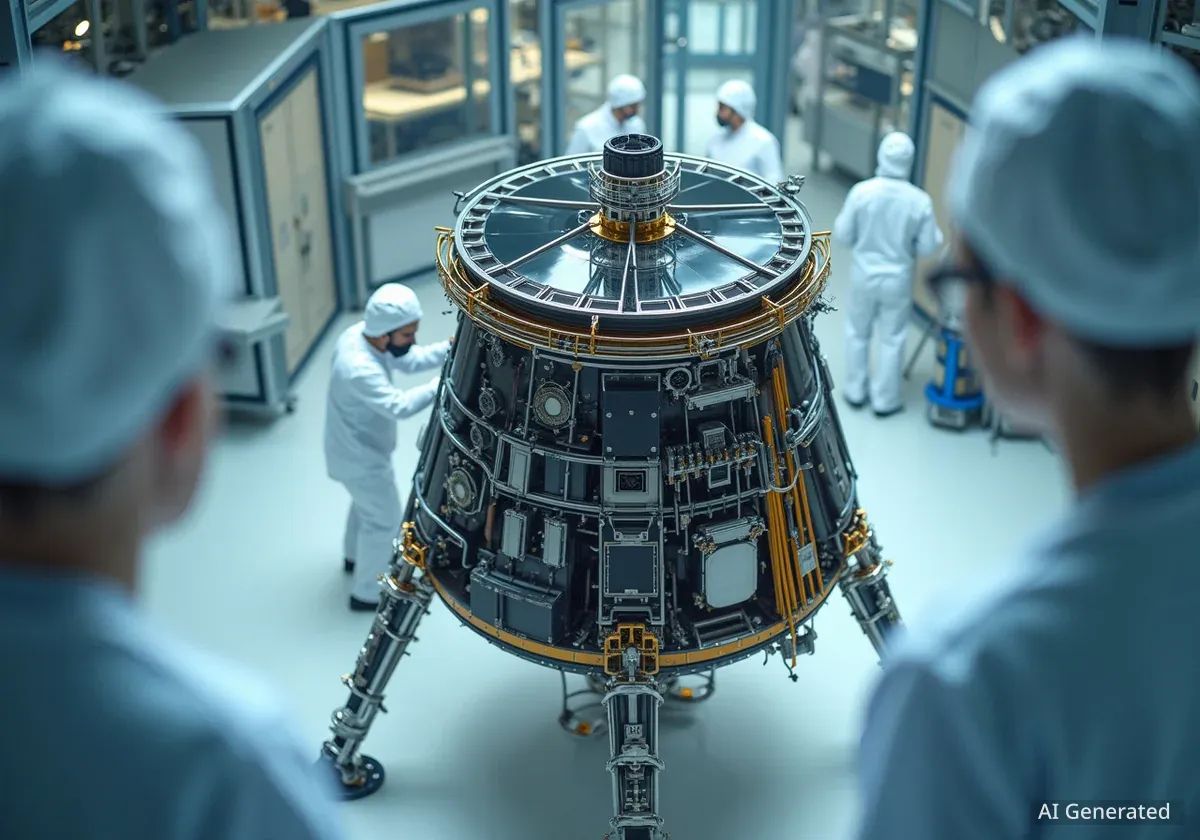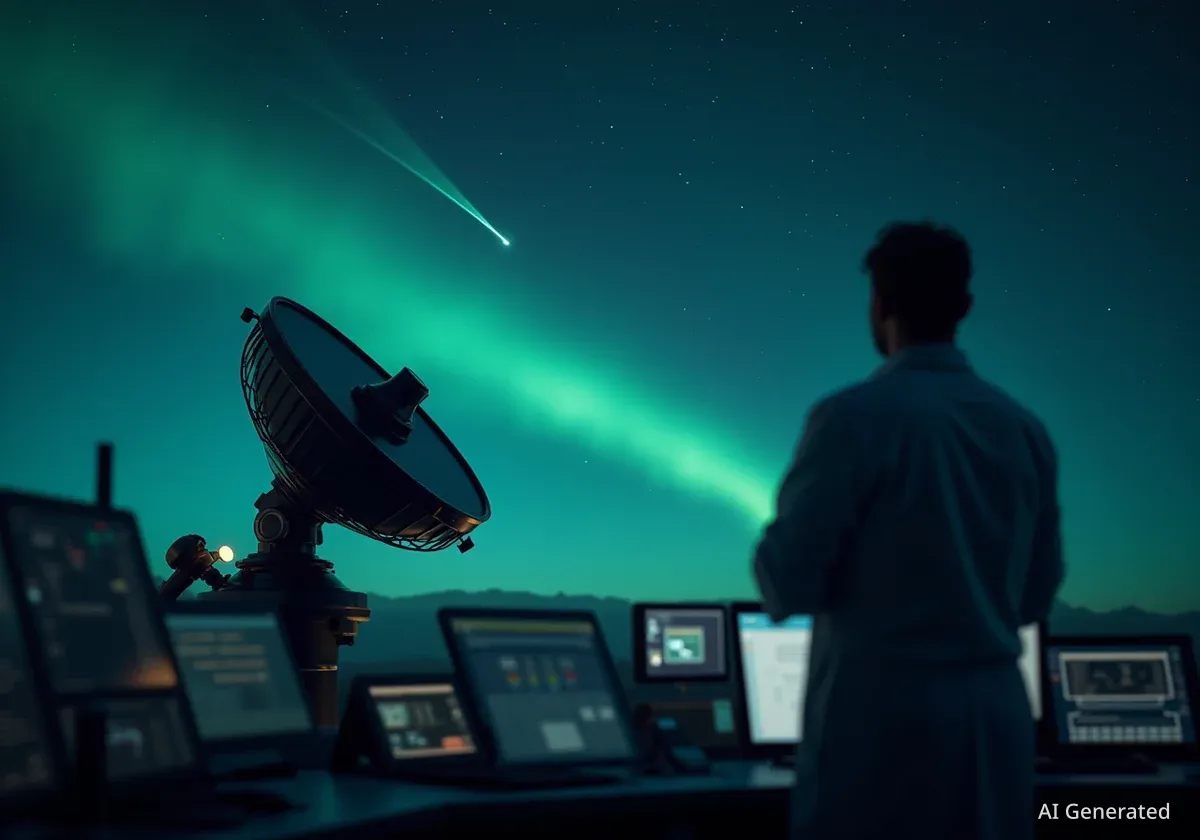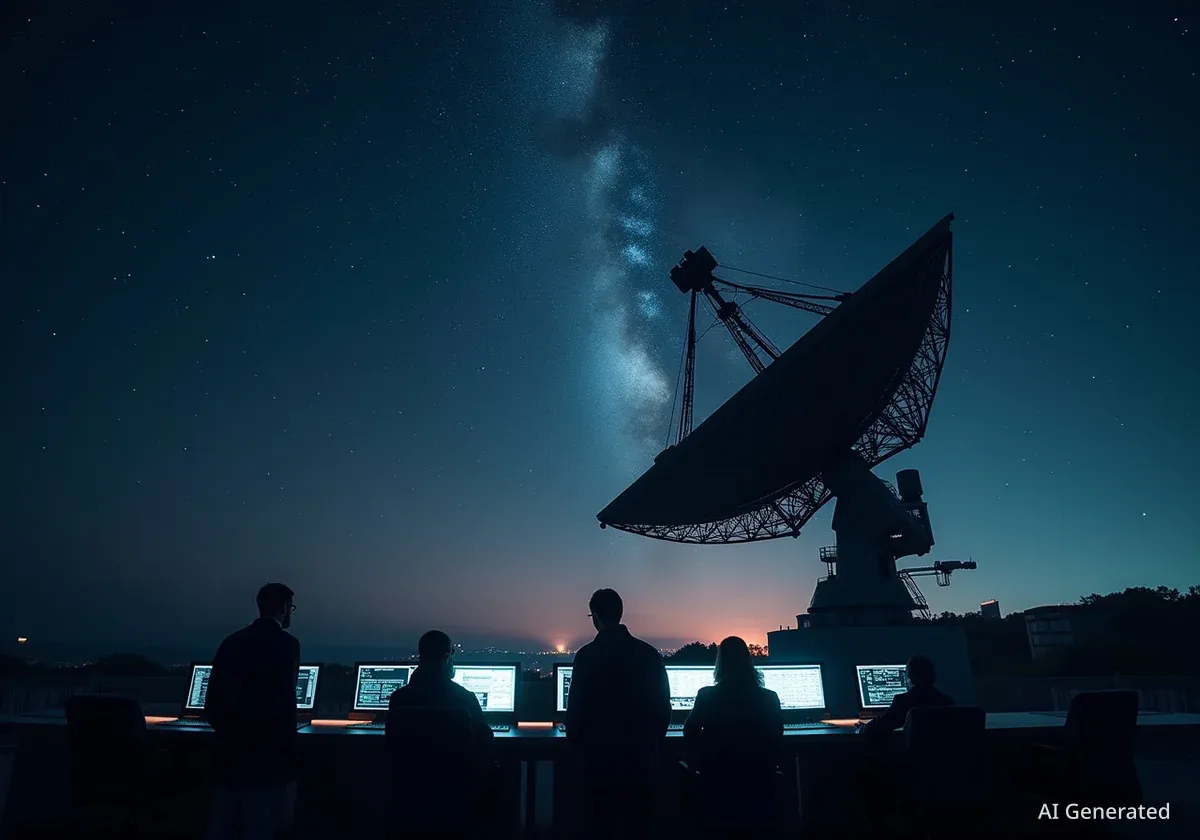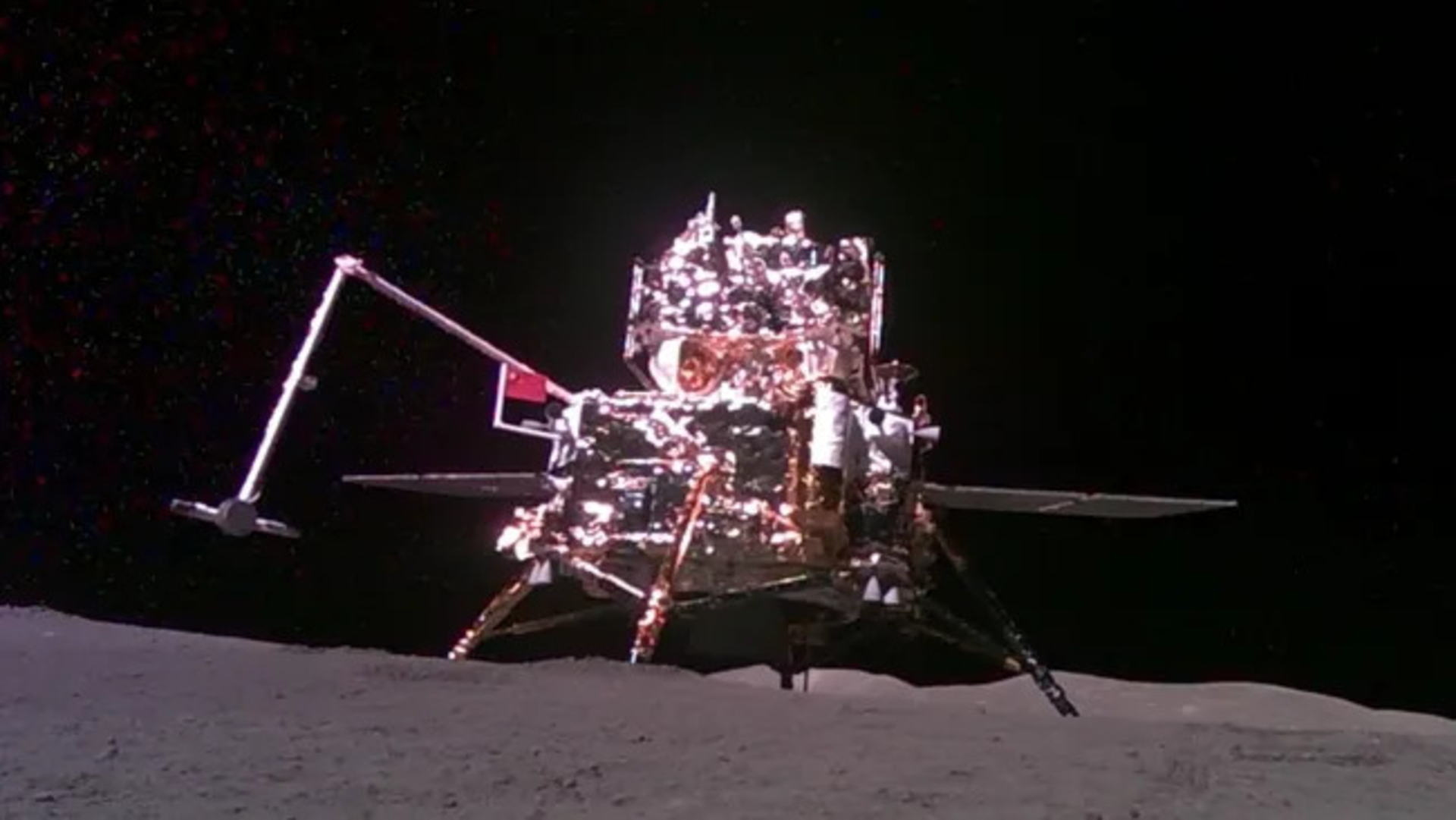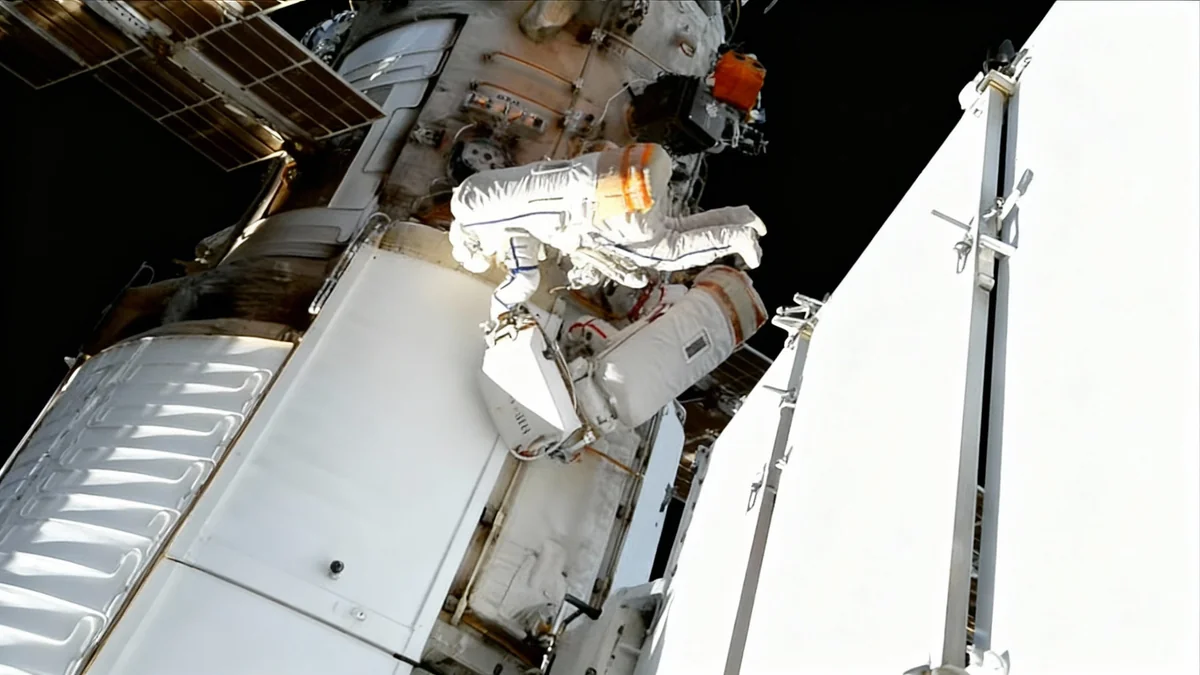The European Space Agency (ESA) has announced the completion of its Plato spacecraft, a mission designed to search for Earth-like planets orbiting other stars. Engineers have now fitted the final major components, a combined sunshield and solar array module, moving the spacecraft into its last phase of rigorous pre-launch testing.
Key Takeaways
- The Plato spacecraft's construction is complete following the installation of its sunshield and solar panels.
- Plato is an ESA mission tasked with discovering and studying terrestrial exoplanets, particularly those in the habitable zones of Sun-like stars.
- The spacecraft is equipped with 26 high-precision cameras that must operate at approximately -80°C.
- Successful deployment tests of its solar arrays have been completed, confirming the power system's functionality.
- Plato is scheduled to launch in December 2026 aboard an Ariane 6 rocket.
Final Assembly Marks Major Milestone
Engineers at ESA's Test Centre in the Netherlands have completed the physical assembly of the Plato spacecraft. The final and most delicate operation involved mounting a large module that serves as both a sunshield and the spacecraft's power-generating solar arrays.
On September 9, technicians used specialized lifting equipment to suspend and carefully align the module with the main body of the spacecraft. Its successful installation marks the end of the construction phase and a significant step toward launch readiness.
"With this operation, we have completed the Plato spacecraft. The combined sunshield and solar array module was the last remaining essential part," stated Thomas Walloschek, ESA’s Plato Project Manager. "It is very satisfying to have reached this moment and to see Plato in its final shape."
A Mission to Find Another Earth
Plato, which stands for PLAnetary Transits and Oscillations of stars, has a distinct scientific objective: to find and characterize planets similar to Earth. The spacecraft will focus its observations on more than 150,000 bright, Sun-like stars to detect planets transiting, or passing in front of, them.
To achieve this, Plato is equipped with an array of 26 advanced cameras. These instruments are designed to detect the minuscule dips in starlight that occur when an exoplanet crosses the face of its star. The precision required for these measurements is exceptionally high.
Plato's Scientific Instruments
The spacecraft's 26 cameras need to be kept at a stable and frigid temperature of around -80°C to minimize thermal noise and ensure the high sensitivity needed to spot small, rocky planets.
Protecting the Sensitive Optics
The newly installed sunshield is critical to the mission's success. By blocking direct sunlight, it will keep Plato's sensitive cameras and electronics cool and in shadow. This allows the instruments to passively cool down to their required operating temperature once in deep space, facing away from the Sun.
"Over the years we have seen what Plato would look like in countless detailed drawings and simulated images, yet seeing the real, completed spacecraft feels very special," said Ana Heras, ESA’s Plato Project Scientist. She noted that the spacecraft's layout is optimized to monitor a vast number of stars with high precision, which is key to finding terrestrial planets.
Critical Systems Tested on the Ground
Following the installation of the solar array module, engineers conducted a series of crucial deployment tests. In orbit, the solar panels will unfold like a pair of wings to capture sunlight and generate power for the spacecraft.
The team tested the deployment mechanism for each wing separately on September 16 and September 22. To simulate the weightlessness of space, the large panels were suspended from a support frame with a pulley system, allowing them to unfold without being stressed by gravity.
Simulating Space on Earth
Testing complex deployments on Earth requires specialized equipment to counteract gravity. The system of pulleys and supports used for Plato's solar arrays is known as a zero-g offloading system, which ensures the hardware behaves as it would in orbit.
Once the panels were fully extended, engineers used a powerful lamp to simulate sunlight. This test verified that the solar cells were correctly converting light into electricity and delivering the expected power levels to the spacecraft's systems. The successful completion of this test confirmed that Plato's power system is ready for its mission.
A Rigorous Path to the Launchpad
With assembly complete, Plato is now set to undergo a series of demanding environmental tests. These trials are designed to ensure the spacecraft can withstand the harsh conditions of launch and the vacuum of space.
The upcoming test campaign includes:
- Vibration and Acoustic Tests: The spacecraft will be vigorously shaken and blasted with powerful noise to simulate the intense mechanical stresses experienced during a rocket launch.
- Thermal Vacuum Testing: Plato will be placed inside the Large Space Simulator, Europe’s largest cryo-vacuum chamber. In this facility, it will be exposed to the extreme temperatures and vacuum of space to confirm that all systems function flawlessly in their operational environment.
These tests are the final examinations Plato must pass before it is cleared for its journey to space.
Collaborative Effort for Cosmic Discovery
The Plato mission is a medium-class mission within ESA's Cosmic Vision programme. Its development is the result of a broad European collaboration. The scientific instrumentation was provided by the Plato Mission Consortium, which includes numerous research centers and industries.
The spacecraft itself was built and assembled by an industrial team led by OHB, with major contributions from Thales Alenia Space and Beyond Gravity. According to ESA, the mission remains on track for its planned launch in December 2026 from Europe's spaceport in French Guiana, utilizing the new Ariane 6 launch vehicle.

